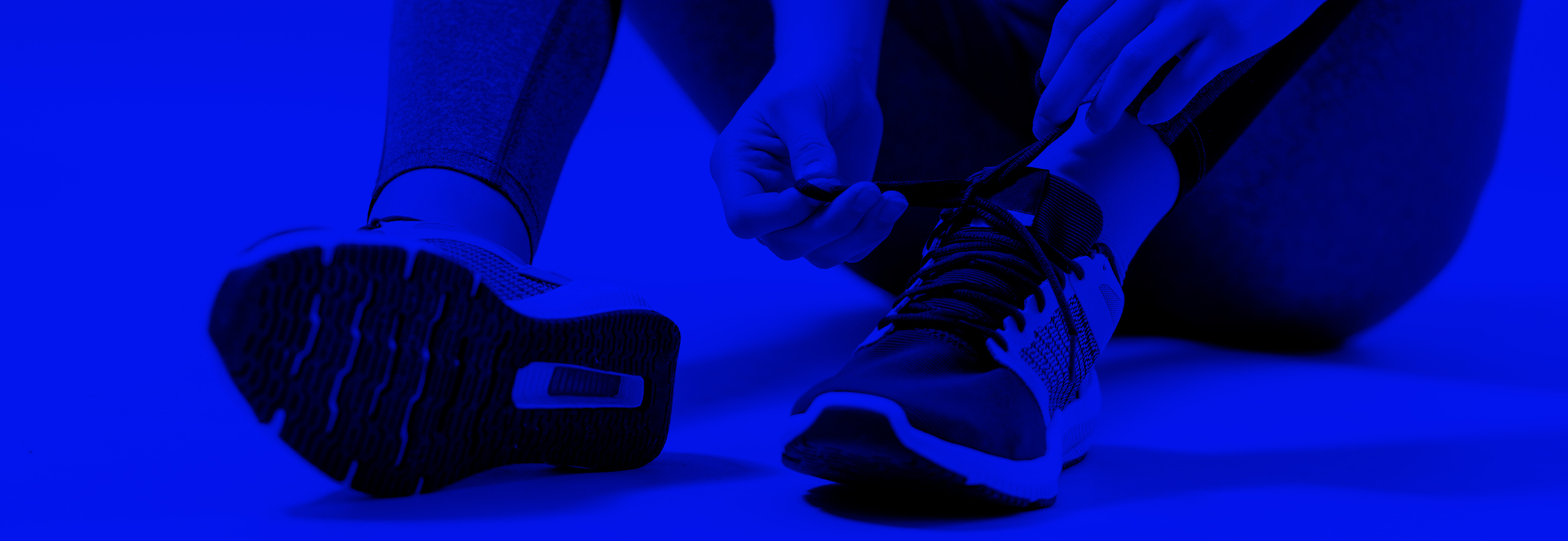What Is Plantar Fasciitis?
Plantar fasciitis is pain and inflammation in the bottom of the heel where the plantar fascia attaches to the heel bone. The plantar fascia is a band of thick connective tissue that lies across the bottom of your foot between your heel and your toes. It is a major support to the arch of your foot and is responsible for creating a rigid lever for push-off during walking.
What Causes Plantar Fasciitis And What Are Common Symptoms?
Plantar fasciitis often occurs when your activity level increases suddenly after a long period of rest. It often occurs ‘out of the blue’.
Common symptoms include:
-
-
- Pain to push on the bottom of your heel.
- Pain to take your first few steps in the morning or after prolonged sitting.
- Pain worsened with standing and walking.
-
How Can Physiotherapy Help My Plantar Fasciitis?
Physiotherapy can help treat both the direct causes of your pain, as well as contributing factors to why it developed in the first place. Your Strive Physiotherapist will employ manual therapies such as massage to the muscles of your calf and joint mobilizations to the bones in the foot and ankle, or modalities such as Shockwave and/or Acupuncture and Dry Needling and acupuncture.
You will be given a tailored exercise program to help strengthen both the muscles that support the arch of your foot as well as the muscles of your hip to reduce the demands placed on the plantar fascia during weight bearing activities. A gait and/or running analysis can be done and advice given on walking and running pattern and proper footwear can be provided.
How Can A Pedorthist Help My Plantar Fasciitis?
A Pedorthist can assess how your lower leg and foot move and adapt to different surfaces, shoes and activities. Your Strive Pedorthist can perform a gait and running analysis and give you advice on the type of footware that will best suit your foot and the activities you like to do. In some cases, custom orthotics may be recommended to provide your foot and lower leg with improved support.
How Long Does It Take To For Me To Recover From My Plantar Fasciitis?
Once you start treatment, your pain will often reduce within a few weeks. However, it can take anywhere from 6-12months before you have fully recovered from your pain. It’s a long process, BUT if you commit to your journey, you will have the strategies to not only manage your pain in the short term but self-manage any recurrences of this pain down the road.
How Can Massage Therapy Help My Plantar Fasciitis?
Massage therapy can also be used to treat both the direct and indirect causes of your plantar fasciitis. Your Strive Massage Therapist will work on a broad range of muscles, helping to reduce tightness through the calf, hips, and lower back that are contributing to your pain. Massage therapists are also skilled in fascial release and neuromobilization techniques which are highly beneficial in the treatment of plantar fasciitis.
What Are The Best Exercises To Help With My Plantar Fasciitis?
To get started with some exercises to help you recover from your plantar fasciitis, check out the Plantar Fasciitis Home Exercise Program. Please keep in mind that these exercises were designed as a place to start to address your symptoms. These exercises should not be performed or continued if they cause or increase your pain in any way. Using these exercises for self-management of your symptoms does not replace the value of being assessed by a Health Professional. If you find you need help, let a Strive Health Professional help you, book your time today!
How Can Sports Medicine/Physiatry Help My Plantar Fasciitis?
In most cases, the conservative management described above is effective in helping you to overcome the symptoms of your plantar fasciitis and get back to your regular activities pain free. However, in some cases you may need to see a sports medicine physician. Your Strive Physiatrist and Sports Medicine Physician may order imaging such as an ultrasound or xray to determine if there is a small tear in the plantar fascia or a heel spur that is slowing down the healing process.
They can also perform various specialized injections such as cortisone and provide medications both oral and topical, and prescribe devices such as night splints and orthotics.
What Can I Do To Treat Plantar Fasciitis At Home?
Avoid doing the things that aggravate your symptoms.
-
- For someone with plantar fasciitis, pain usually starts when you are on your feet for a long time during the day. Try taking frequent breaks to rest and stretch out so that you can delay the onset of your pain and heal faster.
Self-massage or foam rolling to the muscles of your calf and the arch of your foot. If you walk or run for activity, try replacing this with biking to keep up your cardiovascular endurance while allowing the foot to rest. This way, when your foot is ready to return to your regular activities so is the rest of your body!
Written in 2020 by Kiah Brubacher-Cressman, Registered Physiotherapist

Stefanos Goulas
HBScKin, MScPT
Registered Physiotherapist
Growing up playing football, rugby and lacrosse, Stefanos received extensive coaching in strength training, Olympic lifting and sprinting. His personal and clinical experience in these areas has instilled a deep understanding of the biomechanical and technical demands necessary for peak athletic performance. Stefanos believes that successful rehabilitation goes beyond simply treating an injury; it requires an understanding the whole person, their lifestyle and their goals. He integrates exercise prescription, manual therapy and education to create individualize treatment plans tailored to each patients’ unique needs. Whether he is working with athletes or members of the community, Stefanos is committed to helping his patients meet their goals and return to the activities they enjoy with confidence. Originally from British Columbia, Stefanos relocated to Ontario to pursue post-secondary education, earning an Honors Bachelor of Science in Kinesiology from McMaster University and a Masters in Science in Physical Therapy from the University of Toronto.


